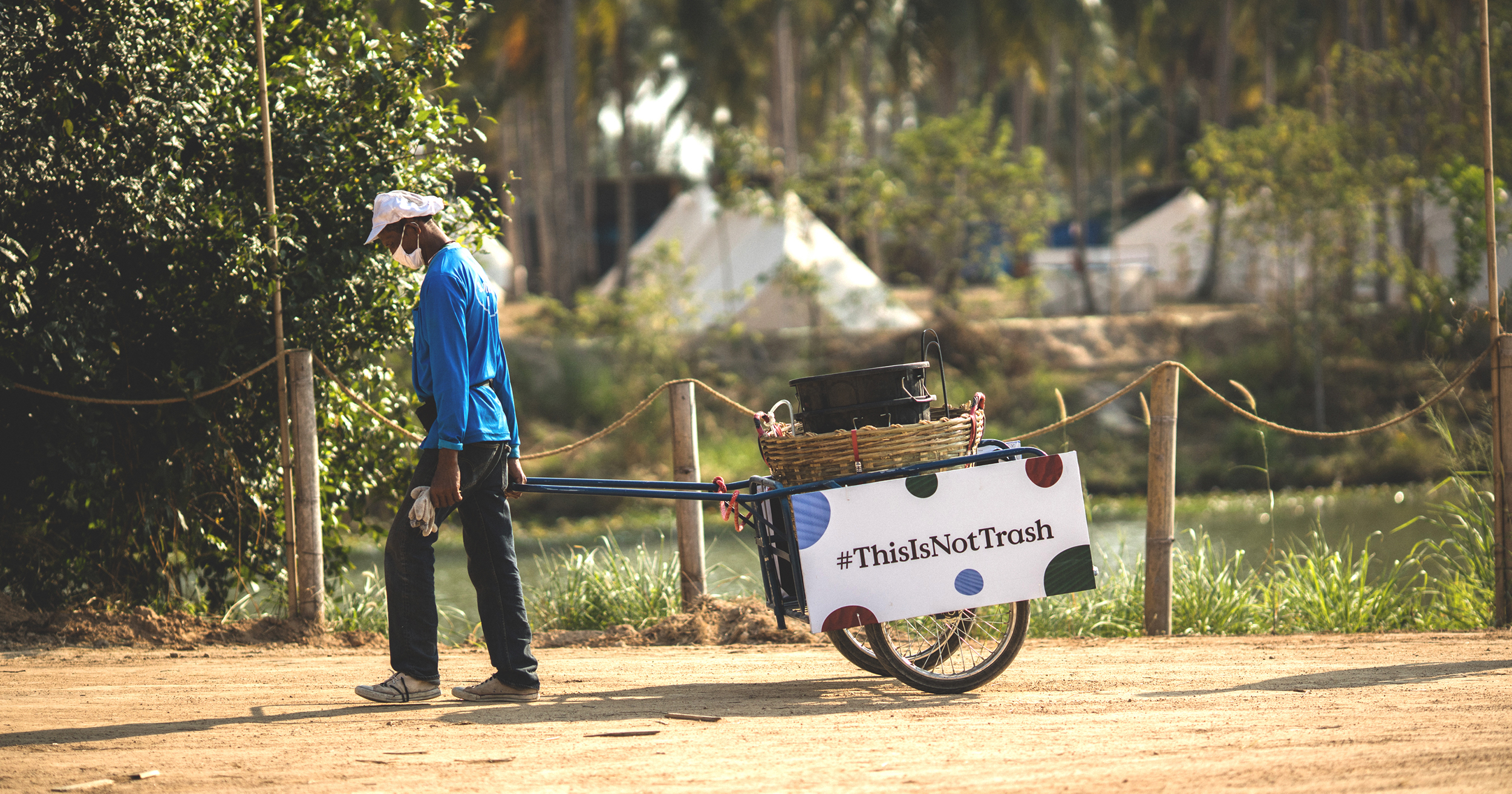It’s the basis of everything we do at Wonderfruit. The reason Wonderfruit appeared into existence all those years ago. And a great way to challenge creative characters to make a positive impact on the world.
it’s sustainability.
Each year, we set ourselves some pretty serious sustainability goals. We encourage ourselves and our community to think about the ways we use resources, source materials, and handle waste. It’s not always glamorous, or as obvious as the more memorable parts of The Fields, but without it our beautiful pop-up city would be a wasteland.
For 2019, our main public goals were split into three types: carbon emissions, landfill, and food waste. We were aiming to remain carbon negative, meaning we absorb more carbon emissions than we produce; we strived to divert 100% of all waste from landfill, finding new ways to use our waste; we wanted to discourage food going to waste, by educating all Wonderers on the impact of food.
So, how did we do? Or, more accurately, how did you do?
Thanks to your voluntary carbon calculator donations, more than 1,000 Tons of CO2, generated by your travel to Wonderfruit, will be offset. Because of this, we will end up offsetting more than we generated for the second year in a row—meaning Wonderfruit has a net positive effect on the atmosphere. We’ll have the final emissions figures later in the year, after an independent audit by TGO.
Just by drinking, you saved 954kg of CO2 from entering the atmosphere. We partnered with EcoSpirits to reduce the number of glass bottles shipped, stored, and supplied in the fields. By refilling bottles to the bars, 1,908 fewer bottles were used.
You diverted 95.4% of all your waste from landfill. By composting all the food waste and packaging on-site, sending all the recyclables to be recycled, flattening the water boxes and transforming them into roof tiles, and turning everything else into resource-derived fuel for cement kilns, less than 5% of all the waste ended up being landfilled. It wasn’t 100%, but we’re pretty pleased with the result.
You used 200,000 fewer single-use cups. And you brought some beautiful alternatives for refill cups to replace the dreaded disposables. All it took was an all-out ban on single-use cups to keep them out of the bins. Easy.
48% of all your waste was recycled. The bulk of the remaining waste was food and packaging. If that doesn’t seem exciting or notable, you should know this: less than 20% of Thailand’s overall waste in the whole country makes it to the recycling plant. You did really well, here.
All liquid waste was stored, transported, and treated. Nothing went down the drain until it had been through a water treatment plant.
100% of all food waste was composted in The Fields, which not only reduced the amount of carbon required to transport the waste away, but also helps nourish our soil for a more bountiful harvest in 2020. Plates, bowls, chopsticks, napkins, and cutlery met the same organic fate.
We aren’t perfect, and there is a lot left to do—but for now, every Wonderer should feel as proud as we do about these achievements.
Go deep on all the data here.
